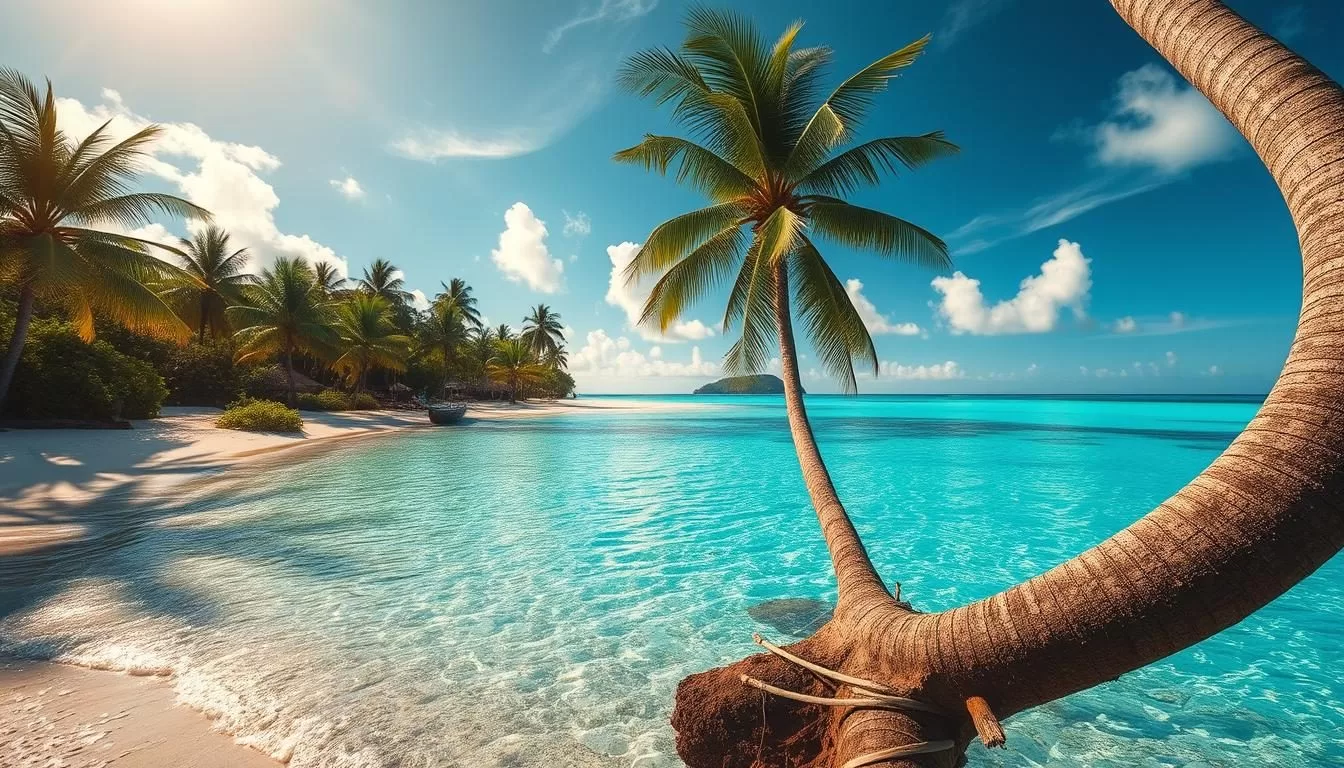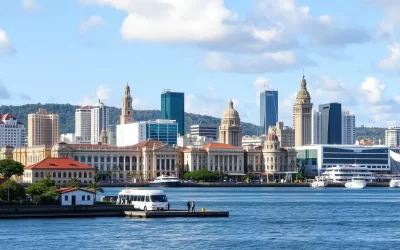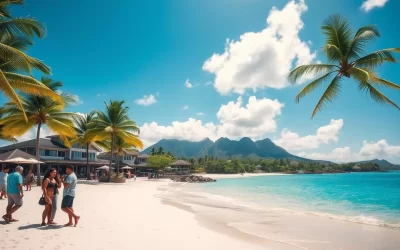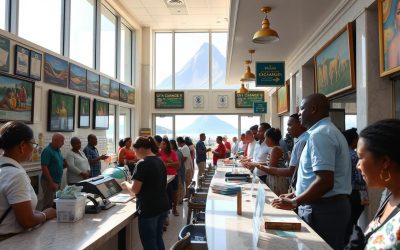✓ Accommodations✓ Flights✓ Rental Cars✓ Tours & Activities
Planning a trip to the island of Mauritius can be a thrilling experience, but understanding the climate is crucial to making the most of your travel plans.
The island’s unique weather patterns vary by region and month, making it essential to choose the right time for your visit.
Whether you’re looking for perfect beach weather or hoping to participate in cultural festivals, this guide will help you navigate through Mauritius’ seasonal variations to determine the ideal trip timing based on your preferences and planned activities.
By understanding the island’s climate and destinations, you’ll be able to make informed decisions about when to book your trip and enjoy a memorable travel experience.
Understanding Mauritius’ Tropical Climate
With its unique geography, Mauritius experiences a distinct tropical climate that varies across the island. The island’s location in the Indian Ocean makes it an attractive destination for those seeking warm weather year-round.
The Island’s Unique Weather Patterns
Mauritius is characterized by its tropical climate, with the wet season running from November to April, coinciding with the summer months in the Southern Hemisphere. High humidity and increased rainfall are typical during this period, especially in January and February when the risk of cyclones is highest. Despite the rain, mornings often start sunny, allowing you to enjoy the beautiful beaches and warm sea temperatures.
The eastern regions of the island receive more rainfall than the western areas due to the prevailing trade winds. However, water temperatures remain pleasant throughout the year, ranging from 75°F to 82°F (24°C to 28°C), making swimming enjoyable regardless of the season.
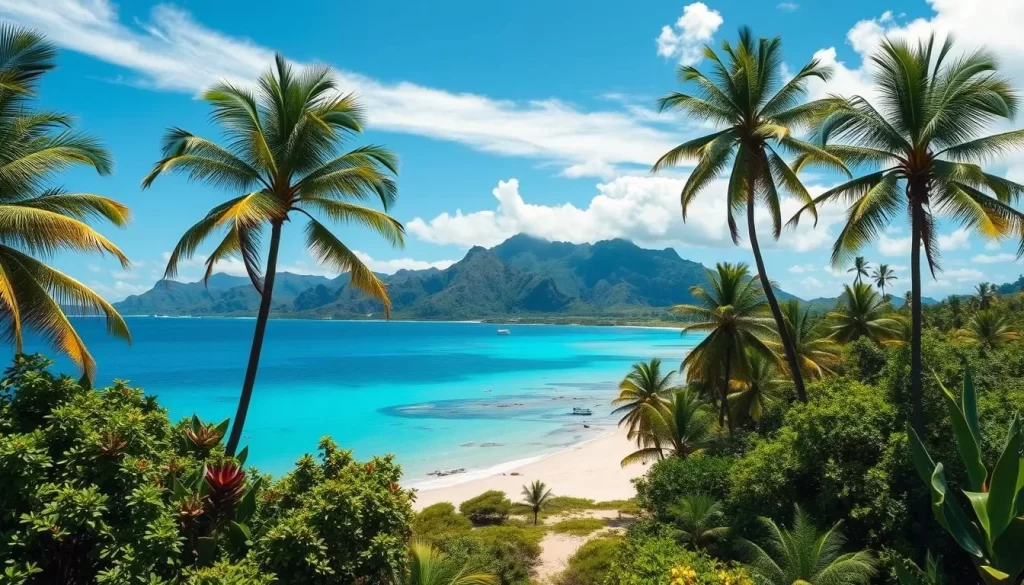
Wet Season vs. Dry Season: What to Expect
The dry season, from May to October, brings cooler temperatures, lower humidity, and significantly less rainfall across the island. This period is ideal for outdoor activities and exploring the island without the hindrance of heavy rain.
| Season | Characteristics | Best For |
|---|---|---|
| Wet Season (Nov to Apr) | Higher humidity, increased rainfall, cyclone risk | Beach activities, water sports |
| Dry Season (May to Oct) | Cooler temperatures, lower humidity, less rainfall | Outdoor activities, island exploration |
Understanding the characteristics of both seasons will help you plan your trip to Mauritius effectively, ensuring that you make the most of your time on the island.
Mauritius: Best Months for a Weather-Savvy Trip
Discover the ideal time to visit Mauritius and make the most of your tropical getaway. The island’s climate varies throughout the year, making some months more suitable for your trip than others.
Peak Season: October to December
The peak season in Mauritius starts in October and continues until December. During this period, you can expect pleasant weather with warm temperatures and low humidity. It’s an ideal time for beach activities and water sports. The average temperature ranges from 75°F to 82°F (24°C to 28°C), making it perfect for outdoor activities.
- Enjoy the festive atmosphere with various events and celebrations.
- Experience the best of Mauritius’ beaches and outdoor activities.
- Take advantage of the dry and sunny weather for sightseeing.
Shoulder Season: May to September
The shoulder season, from May to September, offers a great balance between good weather and fewer crowds. You can enjoy comfortable temperatures and lower accommodation rates. It’s an excellent time for those looking to avoid the peak season crowds while still enjoying the island’s attractions.
- Benefit from lower prices for accommodations and tourist services.
- Explore the island’s natural beauty without the peak season crowds.
- Enjoy water activities and beach time in comfortable weather.
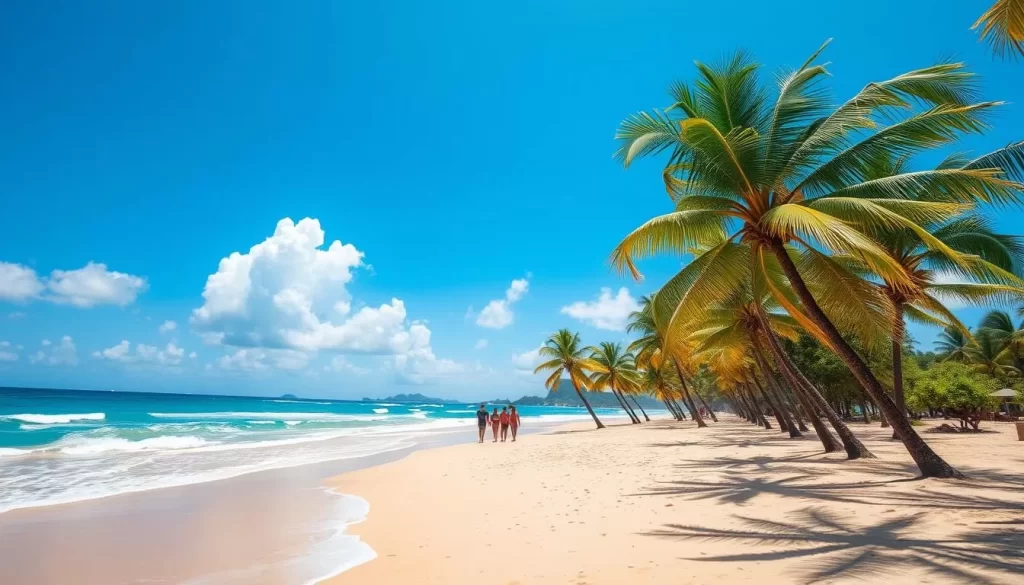
Off-Peak Season: January to April
The off-peak season, from January to April, is characterized by higher temperatures, increased humidity, and greater rainfall. However, this period also offers significant advantages for budget-conscious travelers, including lower accommodation rates and less crowded beaches and attractions.
- Take advantage of lower accommodation rates and special offers.
- Enjoy a more secluded experience at popular tourist spots.
- Experience the island’s warm ocean temperatures ideal for swimming and water activities.
Regional Weather Differences Across Mauritius
Understanding the regional weather differences in Mauritius is crucial for planning your trip effectively. The island’s diverse geography leads to varied climate conditions across its four main coasts: North, East, South, and West.
North Coast (Grand Baie & Port Louis)
The north coast, including popular areas like Grand Baie and Port Louis, generally enjoys a favorable climate throughout the year. During the winter months, this region remains relatively warm and dry, making it an excellent choice for visitors seeking to escape harsher weather conditions elsewhere. The average temperature remains pleasant, and the region is less prone to heavy rainfall compared to other parts of the island.
East Coast Conditions
The east coast of Mauritius is more exposed to the southeast trade winds, resulting in stronger winds and slightly cooler temperatures, especially during the winter months. While this can make the region less appealing for some, it also means that the east coast experiences a refreshing climate during this time. Visitors should be prepared for windier conditions if they choose to stay on the east coast.
South Coast (Bel Ombre & Chamarel Mountains)
The south coast, encompassing areas like Bel Ombre and the Chamarel Mountains, has a unique microclimate due to its geography. This region can experience more rainfall than other areas, particularly during the summer months. However, the landscape’s beauty, with its lush forests and dramatic mountains, makes it an attractive destination for nature lovers and those seeking to explore the island’s inland areas.
West Coast Weather Patterns
The west coast, including popular areas like Flic en Flac and Tamarin, enjoys a relatively sheltered position, protected from the southeast trade winds. This results in calmer seas and less rainfall, especially during the winter months, making it an ideal location for beach activities and water sports. The west coast is known for its spectacular sunsets and diverse range of beaches, from white sand to black sand beaches.
| Coast | Weather Characteristics | Best Time to Visit |
|---|---|---|
| North | Warm and dry during winter | May to September |
| East | Windier and cooler during winter | October to April |
| South | More rainfall, lush landscapes | April to October |
| West | Sheltered, calm seas, less rainfall | May to September |
Month-by-Month Weather Guide to Mauritius
To make the most of your trip to Mauritius, it’s essential to understand the island’s weather patterns month by month. This guide will help you navigate the different seasons and plan your activities accordingly.
Summer Months (December-March)
Summer in Mauritius is characterized by warm temperatures and high humidity. During these months, the island experiences a significant amount of rainfall, with occasional cyclones.
Temperature, Rainfall & Humidity
Temperatures during the summer months range from 82°F to 88°F (28°C to 31°C), with an average humidity of 80%. The rainfall is substantial, with some areas receiving over 10 inches (250 mm) of rain during this period.
Cyclone Season Considerations
Mauritius is susceptible to cyclones during the summer months. It’s crucial to stay informed about weather forecasts and warnings to ensure your safety.
Winter Months (May-September)
Winter in Mauritius is relatively dry and mild, making it an attractive time to visit for those seeking a warm winter getaway.
Temperature Ranges & Trade Winds
Temperatures during the winter months range from 68°F to 75°F (20°C to 24°C), with a refreshing trade wind that keeps the climate pleasant.
Rainfall Patterns & Sea Conditions
Rainfall is minimal during the winter months, with most areas receiving less than 2 inches (50 mm) of rain. The sea conditions are generally calm, making it ideal for water activities.
Transition Months (April, October-November)
The transition months offer some of the most balanced weather conditions in Mauritius, combining comfortable temperatures with moderate rainfall.
April marks the end of the summer season, with decreasing humidity and rainfall while still maintaining warm temperatures around 82°F (28°C). October is the driest month, with minimal rainfall and rising temperatures. November brings increasing warmth and the start of the summer season, though without the peak humidity and rainfall.
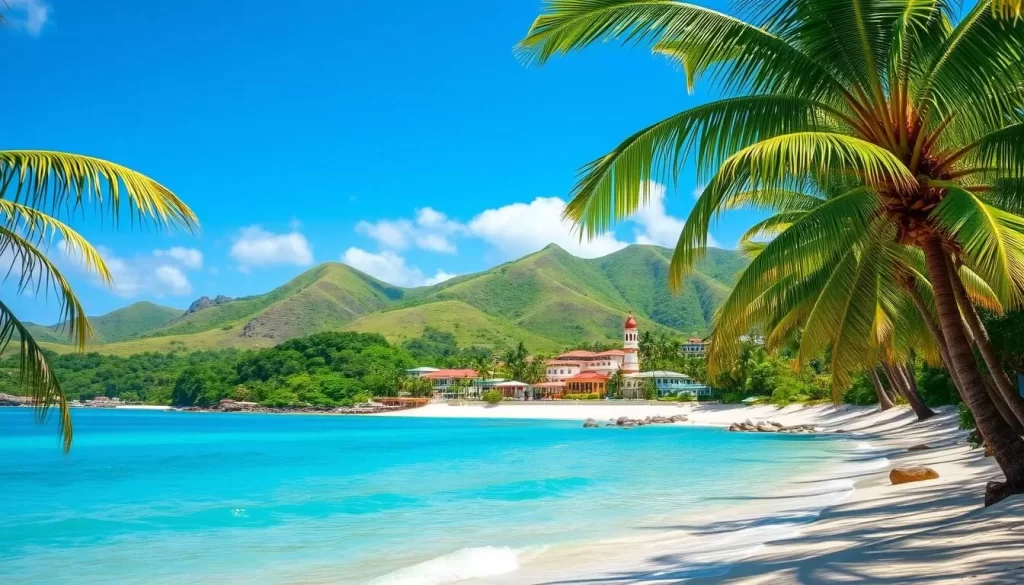
These months provide the best value for travelers, with lower prices than peak season but more reliable weather than the wet summer months. Water temperatures are ideal for swimming and water sports, ranging from 75°F to 79°F (24°C to 26°C). Cultural festivals like Diwali and harvest celebrations add to the richness of your visit.
Planning Your Trip Around Mauritius’ Weather
When planning your trip to Mauritius, understanding the weather can make all the difference in your experience. The island’s tropical climate means that the weather varies throughout the year, impacting the suitability of different activities and experiences.
Best Time for Beach Activities & Water Sports
The best time for beach activities and water sports in Mauritius is during the summer months (November to April) when the sea is warm and calm, making it ideal for swimming, surfing, and other water activities. The warm weather during this period also makes it perfect for sunbathing and relaxing on the beach.
Ideal Months for Hiking & Inland Exploration
For hiking and inland exploration, the cooler and drier months (May to September) are more suitable. During this period, the weather is pleasant, making it easier to explore the island’s natural beauty, including its mountains, forests, and wildlife.
Weather Considerations for Diving & Snorkeling
Diving and snorkeling are popular activities in Mauritius, and the weather plays a significant role in determining the best time for these experiences. While it’s possible to dive year-round, the summer months offer warmer water temperatures, attracting a diverse range of marine life. The visibility is superior during the winter months, making it ideal for underwater photography.
| Activity | Best Time | Weather Conditions |
|---|---|---|
| Beach Activities & Water Sports | November to April | Warm and calm sea |
| Hiking & Inland Exploration | May to September | Cooler and drier |
| Diving & Snorkeling | November to April (summer) | Warmer water, diverse marine life |
| Diving & Snorkeling | May to October (winter) | Superior visibility |

By planning your trip according to the weather, you can make the most of your experiences in Mauritius, whether you’re looking to relax on the beach or explore the island’s natural beauty. Mauritius is a wonderful destination that offers something for everyone, at any time visit.
Mauritius’ Cultural Calendar & Weather
As you plan your trip to Mauritius, understanding the cultural calendar and its relation to the weather can enhance your experience. The island’s diverse cultural heritage is reflected in its numerous festivals and celebrations, many of which are tied to the weather and seasons.
Hindu Festivals Throughout the Year
Mauritius is known for its vibrant Hindu festivals, with the Holi Festival, or ‘Festival of Colours,’ being a highlight in March. This celebration honors Lord Krishna and fills the streets with color and joy. Other significant Hindu festivals include Thaipoosam Cavadee, which features devotees performing acts of devotion such as fire walking and body piercing.
Planning Around Major Celebrations
When planning your trip, consider the timing of major festivals like the Chinese Spring Festival in January or February, which brings dragon dances and fireworks to Port Louis. These events not only offer a glimpse into local culture but also coincide with lower hotel rates during the low season, making for a more authentic and budget-friendly experience.
Low Season Events Worth Experiencing
The summer low season (January to April) is filled with unique cultural experiences. Apart from Holi, Ugadi, the Telugu New Year, celebrated in March or April, is another significant event, featuring special meals and cultural performances across the island. Many tour operators offer special cultural tours during these festivals, enhancing your appreciation of these traditional celebrations.
| Festival | Month | Description |
|---|---|---|
| Holi Festival | March | Celebration of colors and joy |
| Thaipoosam Cavadee | January/February | Devotional acts including fire walking |
| Chinese Spring Festival | January/February | Dragon dances and fireworks |
| Ugadi | March/April | Telugu New Year celebrations |
Conclusion: Making the Most of Mauritius’ Weather
The best time to visit Mauritius depends on your preferences, whether you’re looking for optimal beach weather or cultural experiences. Understanding the island’s weather patterns allows you to make informed decisions about when to visit this tropical paradise.
For the best beach weather and water activities, consider visiting during the dry season from May to November, with October being particularly ideal. If you’re on a budget or prefer fewer crowds, the shoulder seasons (April-May or September-November) offer excellent weather conditions and better rates.
Ultimately, Mauritius’ subtropical climate and natural beauty make it a worthwhile destination throughout the year. Whatever time you choose to visit, you’re sure to have a memorable tropical island experience that will leave you planning your return trip for years to come.
The above is subject to change.
Check back often to TRAVEL.COM for the latest travel tips and deals.
